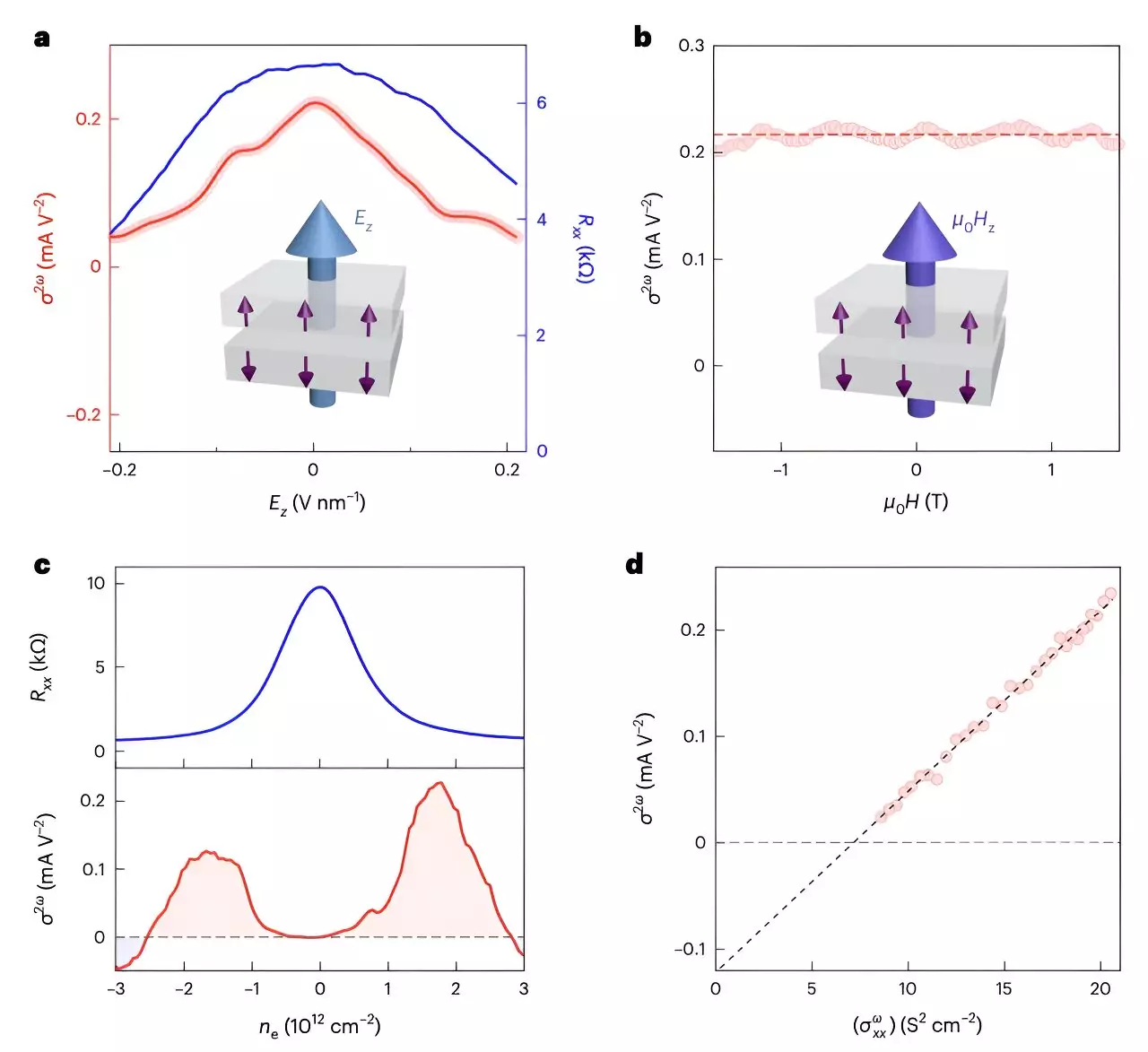Antiferromagnets are a fascinating class of materials characterized by their distinct alignment of magnetic moments, which alternate direction at the atomic level. This unique arrangement ultimately results in the absence of net macroscopic magnetization. Despite this seemingly non-magnetic characteristic, antiferromagnets possess properties that could revolutionize the fields of spintronics and electronics. Recent findings from researchers at Harvard University spotlight a significant step forward in our understanding of these materials, revealing the antiferromagnetic diode effect in the layered compound MnBi2Te4.
The antiferromagnetic diode effect, as observed in MnBi2Te4, is the ability of the material to direct electrical current in one direction, akin to traditional diodes. This discovery is particularly intriguing because it unveils a unique mechanism of charge separation that is traditionally absent in centrosymmetric materials—those which lack directional properties yet somehow achieve a controlled flow of current. The implications of these findings extend beyond our conventional understanding of diode functionality and may open avenues for innovative electronic applications.
Published in the journal *Nature Electronics*, the Harvard researchers indicated that their observations could lead to advanced applications such as in-plane field effect transistors and systems for harvesting microwave energy. This is especially pertinent considering the ever-increasing demand for efficient, high-performance electronic devices that utilize alternative magnetic states for improved functionality.
To investigate the antiferromagnetic diode effect, the researchers undertook a meticulous experimental approach. They engineered devices featuring even-layered MnBi2Te4, employing various electrode configurations. Two configurations were primarily tested: Hall bar electrodes, which allow for current flow measurement alongside the transverse Hall effect, and radially distributed electrodes that facilitated a different pattern of current interaction. Their results showcased the antiferromagnetic diode effect in both setups, offering compelling evidence of nonlinear electrical transport, critically important for future applications.
The team employed an array of sophisticated techniques for their analysis. Notably, they utilized spatially resolved optical methods alongside electrical sum frequency generation (SFG) measurements, which provided insights into the nonlinear electronic responses inherent to the antiferromagnetic state of their material. These methods not only confirmed the presence of the diode effect but also emphasized the remarkable nonlinear behaviors present in quantum materials.
This groundbreaking exploration of the antiferromagnetic diode effect in MnBi2Te4 represents a transformative potential for electronics, particularly in the realm of logic circuits and spintronic devices. The research highlights the vast capabilities of using antiferromagnetic materials in constructing devices that could rival or surpass current technology. The prospect of antiferromagnetic logic circuits could enhance data processing speeds and energy efficiency—a critical requirement in today’s rapidly evolving technological landscape.
Moreover, the unique properties of antiferromagnets may cater to the burgeoning field of quantum computing. As researchers continue to decipher the complexities of quantum materials, the antiferromagnetic diode effect serves as a stepping stone toward the synthesis of even more advanced devices capable of harnessing unique quantum states.
The discovery of the antiferromagnetic diode effect in MnBi2Te4 is a significant milestone in the study of antiferromagnetic materials. The implications of this effect, coupled with the innovative methodologies employed by the Harvard research team, illuminate a promising pathway toward the design of next-generation electronic devices. As this nascent field of research continues to flourish, we can expect further advances that may redefine our approach to electronics, offering sustainable and high-performance alternatives in a technology-driven world. As the scientific community delves deeper into the properties and applications of antiferromagnetic materials, the breakthroughs we witness could well shape the future of electronic innovation.


Leave a Reply